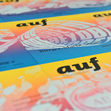Breaking The Pattern Of The Machines
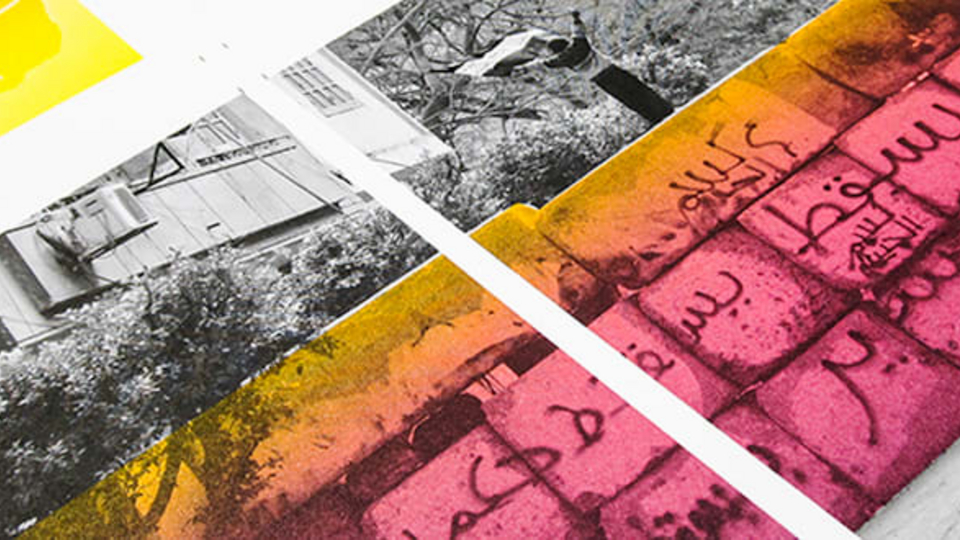
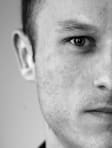
Ruediger John
- Zur PersonRuediger John
Ruediger John is an Austrian artist. He creates situative, installative, interventionistic works and employs research- and publication-oriented strategies. Since 1997, his focus has been on theoretical and practical work in Artistic Research and Systemic Art focusing his attention to transdisciplinary work and research, and the application of aesthetics and art in social subsystems, i.e. academia, politics and economics. Since 2007, Ruediger John has created artworks such as “Orientierung” (Orientation, 2007), been involved in events and created publications such as Logbuch and the Cicerone art guide for the artsprogram at the Zeppelin University.
- Mehr ZU|DailyDas Raster der Maschinen brechenSmarte Systeme bestimmen zunehmend die Abläufe der Welt – und damit den menschlichen Aktionsradius. Diese Strukturen aufzubrechen und die Wahrnehmung zu sensibilisieren, ist eines der Ziele künstlerischer Interventionen. Das tut der Künstler Ruediger John im Rahmen des Magazins „auf“.
ISO, DIN, zero-error principle, nanotechnologies; all key words of our time which are delimited by a higher order term: perfection. In today's highly industrialized, high-tech and by now autonomously operating "smart world," efforts are made to largly eliminate the evolutionary and deeply rooted "trial and error" principle by means of algorithms and sophisticated mechanisms. Electronic systems in vehicles, intuitively controlled computer interfaces, but also manufacturing plants in industrial operations strive for efficiency and thus increasingly shrink the human field of action. Where manual manufacturing methods used to provide individuality and boundaries, current algorithm-supported production processes take over the important skills in industry and at home or provide them with support, as is the case in hot type or graphics.
Quicker and "cleaner" processes, as well as a high level of quality, standardization and accompanying interchangeability, are the result. A well-known example is the ISO quality management standard ISO:9001. That the targeted failure of such quality mechanisms also represents an interesting approach, is, for instance, revealed in the production of the new issue of "auf" magazine.
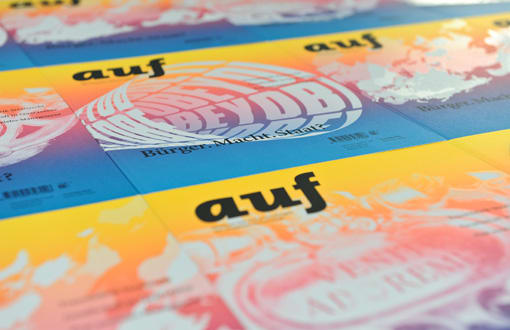
Because, in addition to efficiency and quality, today's level of mechanization can also lead to "serialization and instructions to the point of where it becomes a limitation or obstruction," according to the artist Ruediger John: "You can clearly recognize how certain technical possibilities determine forms of expression and perceptions in everyday life." Walter Benjamin already wrote in 1935 within the context of the new mass phenomenon of photography, that, along with the whole mode of existence of the human collective, the manner of their sensory perception also changes over long periods of history. Although he was originally referring to the reception of art, Benjamin's thoughts can be transferred analogously today to the effects of electronic systems on our everyday life.
Despite individualization tendencies in the course of "mass customization" processes, a certain degree of packaging and standardization is maintained.
This is precisely Ruediger John's point of approach: within in the framework of artistic interventions, he influences existing processes and routines, attempting to create a "contextual displacement and thus a change in perception. These interventions can also be assigned to the field of organizational aesthetics, which deals with, for instance, achieving new perspectives on the level of entire organizations, certain subgroups or even individual persons."
Ruediger John now carries out one of these interventions within the framework of "auf" magazine. Ruediger John created the artistic concept of the magazine and served as the creative director of the first three issues. An important conceptual element in the process is that the artistic contribution "does not just meander through the publication, but rather creates sometimes narrower, sometimes wider associations with the texts and topics."
The current edition, #03, on political and social movements bears the title "Citizens. Power. State?". In addition to the interventionist overall concept of the magazine, the production process was fractured in this case in such a way that even the design of the print products corresponded to the topic in its dynamics and singularity: each issue became a unique copy. A manual intervention constituted an important component here in abolishing the uniformity of the machine – and thus increasing the spectrum for personal action: "By very specifically opening and manipulating the printing machine and thus outwitting the computer controlled system, we had more possibilities than before to generate something new." This also opened up space for random developments so that, in this case, even experienced printing experts could learn something new.
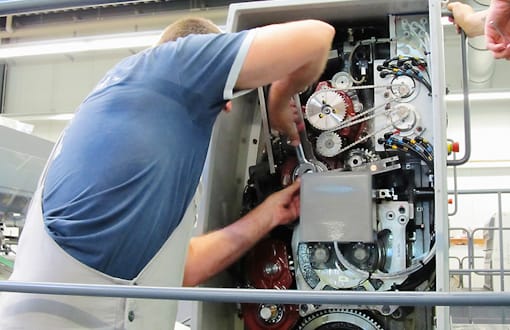
The degree of freedom in the artistic work in "auf" is consciously maximized as art is "not a linear definition, not a playing field boundary;" rather a permanent connection should be created, according to communication designer Philipp N. Hertel, art director and project coordinator for the magazine. An important criterion of artistic interventions is fulfilled with the free space: that companies engage in art and actually abandon the planned path. If artists intervene in processes, they can create inefficiencies and dissonances with the familiar and thus attempt to use these dynamics as motivation and to achieve awareness. Ruediger John: "Here I can effectively intervene in a critical-aesthetic manner and allow exciting results to be created."
This principle is reflected even in the specific magazine production in the manual interventions into the regulating automatisms of the production machines. When describing the roughly 20-hour long iterative printing process, Volker Eyrich, project consultant at Bodensee Medienzentrum, states that "the first batches thus wound up in the trash, since the color tones weren't yet perfect." The "rainbow printing," a process for soft color gradients, was changed to such a degree that, for instance, the color spectrometers and levigating devices of the printing machines produced the desired differences through manual guidance. The desired product was thus developed successively by playing with the machine. On the one hand, a "struggle," as Eyrich describes it. On the other hand, the desired rupture of routinized actions and the virgin soil that Ruediger John wants to activate and produce in his works. Together with the varying "color tendencies" that this created and in conjunction with three different cover versions, the "section-like and thus incomplete" view that a single, individual magazine is capable of providing should become clear to the reader. It becomes a magazine model accustomed to intervention.
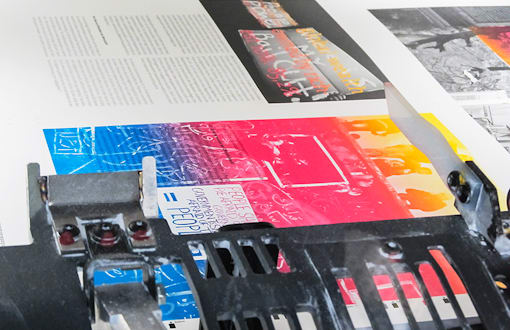
Ruediger John is certain that artistic interventions will increase in relevance. In the wider economic context, i.e., beyond individual artists, established structures already indicate this in, for instance, Sweden, Spain and France. These countries have so-called intermediaries: organizations that bring together artists and companies and oversee the interventions administratively.
The revision of certain behavioral patters, for example through dissonance with the familiar and through irritation, is also pursued there. As "auf" also attempts conceptually. Ruediger John formulates it as follows: "The magazine remains an experiment and a work in progress; it does not have to be immediately clear to everyone nor please everyone; it must, however, motivate or – even better in my opinion – make people uneasy."
Images: Ruediger John; Engelbert Rief/BMZ , Bertram Rusch
Haben Sie Anmerkungen zum Beitrag?
Ihre Sichtweise ist uns wichtig! Der Leserbrief gelangt direkt in die Redaktion und wird nach Prüfung veröffentlicht.
Vielen Dank für Ihr Verständnis!
Antwort auf: Direkt auf das Thema antworten

